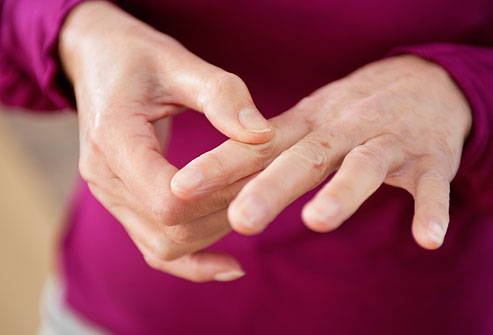Some people believe that you have to feel pain to experience gains in exercise. That couldn’t be further from the truth. For the most part, you should never experience actual pain during a workout. You should feel your muscle working, possibly even screaming in exertion, and you will undoubtedly feel sore afterward. That isn’t the same as pain, though. If you experience pain, especially certain types of pain, it may indicate an injury.

Pushing through the pain and continuing to exercise can potentially cause serious and long-lasting damage that will keep you from exercising well into the future.
Here are five types of pain that should always act as a caution flag on your workout.
1. Pain in a Joint
Unless you normally have pain in your joints as part of a medical condition or age-related degeneration, then you shouldn’t experience pain in them during a workout. Even then, the pain should not increase or intensify during exercise. Remember, you are exercising your muscles, not your joints.
2. Sharp Pains
Exercise-associated pain tends to feel like straining or tightness, not stepping or sharp pain. Any time you experience a pain that feels sharp or piercing, it is a sign that something is wrong. Listen to your body; it is telling you to stop before you make the situation worse.
The pain could be caused by:
- a tear or rupture to soft tissue like a tendon or ligament
- cartilage damage within a joint
- a muscle or connective tissue could have become dislodged from its anchor position
- a bone spur or chip causing impingement
No matter the cause, a sharp pain that lasts for more than a brief second or that reappears warrants a call to a doctor for evaluation.
3. Pain That Lingers
While soreness is perfectly normal after exercise, any new or unusual pain should not linger. If you experience pain in a joint or muscle that doesn’t resolve once you stop a movement, it could be a sign of damage. Or, it could just mean that you are pushing a bit too hard through your routine.
Use the Arthritis Foundation’s two-hour rule to judge if you need to back off a bit in the intensity or type of exercises you are performing.

Don’t confuse this type of pains with delayed onset muscle soreness. DOMS typically appears one to two days after an intense or novel workout. It is caused by micro-tears in muscle fibers, and will generally resolve in a few days. Resting, applying ice packs and taking over the counter anti-inflammatory can help ease the pain. Some people find that adding a protein supplement such as Power Life High Impact Whey Protein to their diet can help speed this recovery process.
4. Pain Accompanied by a Popping Sound
Everyone has some small noises that manifest during a workout. Whether it is a crunching sound when you move a loaded joint or the tiny crackling inside your neck, they aren’t associated with pain and tend to be harmless. Anytime you hear a popping sound accompanied by pain, however, you should stop what you are doing immediately. This could indicate a torn or ruptures muscle or tendon that requires medical attention.
5. Pain That Includes Swelling
Acute inflammation indicates infection, sure, but it is also a sign that your body is trying to heal itself. If you are experiencing healing, then there is likely an injury. Any pain that is accompanied by inflammation should warrant care. Stop what you are doing, put ice on the injury, and rest it until it heals. If there is no improvement in a day or so, seek advice from your doctor.

Exercise often causes minor discomfort or pains, and you will almost certainly feel sore after a tough workout. If you experience pain that is accompanied by swelling, heat or popping sounds, pain that intensifies when you exercise and then lingers, or pains in a joint or other localized area, you should stop what you are doing and address it. If it persists after ice and rest, consult a healthcare professional for testing and to determine the best course of action moving forward.
Disclaimer
The Content is not intended to be a substitute for professional medical advice, diagnosis, or treatment. Always seek the advice of your physician or other qualified health provider with any questions you may have regarding a medical condition.